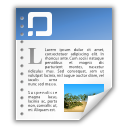| dc.contributor.author | Ryan, Emily | |
| dc.date.accessioned | 2010-04-14T21:26:58Z | |
| dc.date.available | 2010-04-14T21:26:58Z | |
| dc.date.issued | 2010-03-01 | |
| dc.identifier.uri | http://hdl.handle.net/1803/3997 | |
| dc.description | Teaching and Learning Department capstone project. This capstone project provides monolingual teachers with both rationale and strategies for using students' native languages in the classroom to enhance students' academic achievement, English language development, self-esteem and identity development, bilingualism, and metalinguistic awareness. | en_US |
| dc.description.abstract | The number of English Language Learners in American public schools is increasing every year, yet these students are not achieving academic or English proficiency as measured by standardized assessments. Researchers have documented the use of students' native languages as a valuable academic resource tool for English Language Learners. Research shows that when teachers incorporate students' native languages into classroom instruction, students increase their metalinguistic awareness, learn more academic content, increase their English proficiency, and have more well-developed identities and self-esteem. However, incorporating students' native languages into the classroom can be very difficult in multilingual classrooms or in classrooms in which the teacher only speaks English. Furthermore, it is a political and emotional debate due to its roots in Americanism and English as a national language. However, the use of students' native languages can influence the success of English Language Learners in our school system. Therefore, finding strategies that allow teachers to incorporate students' native languages into the classroom, even when the teacher does not speak the language, is a vital issue for educators today. This paper addresses the benefits of incorporating students' native languages into daily classroom instruction, methods and strategies for using students' native languages, and an example of using students' native languages in a small-group setting. | en_US |
| dc.language.iso | en_US | en_US |
| dc.publisher | Vanderbilt University. Peabody College | en_US |
| dc.subject | English Language Learners | en_US |
| dc.subject | Native Language use | en_US |
| dc.subject | Monolingual Teachers | en_US |
| dc.subject | Multilingual Education | en_US |
| dc.subject.lcsh | English language -- Study and teaching -- Foreign speakers | en_US |
| dc.subject.lcsh | Limited English-proficient students -- Education -- United States | en_US |
| dc.subject.lcsh | Education, Bilingual -- United States | en_US |
| dc.subject.lcsh | English language -- Acquisition | en_US |
| dc.subject.lcsh | Second language acquisition -- Study and teaching | en_US |
| dc.title | Using Students' Native Languages in the Classroom: Rationale and Strategies for Monolingual Teachers | en_US |
| dc.type | Capstone | en_US |
| dc.description.college | Peabody College of Education and Human Development | en_US |
| dc.description.school | Vanderbilt University | en_US |
| dc.description.department | Department of Teaching and Learning | en_US |


